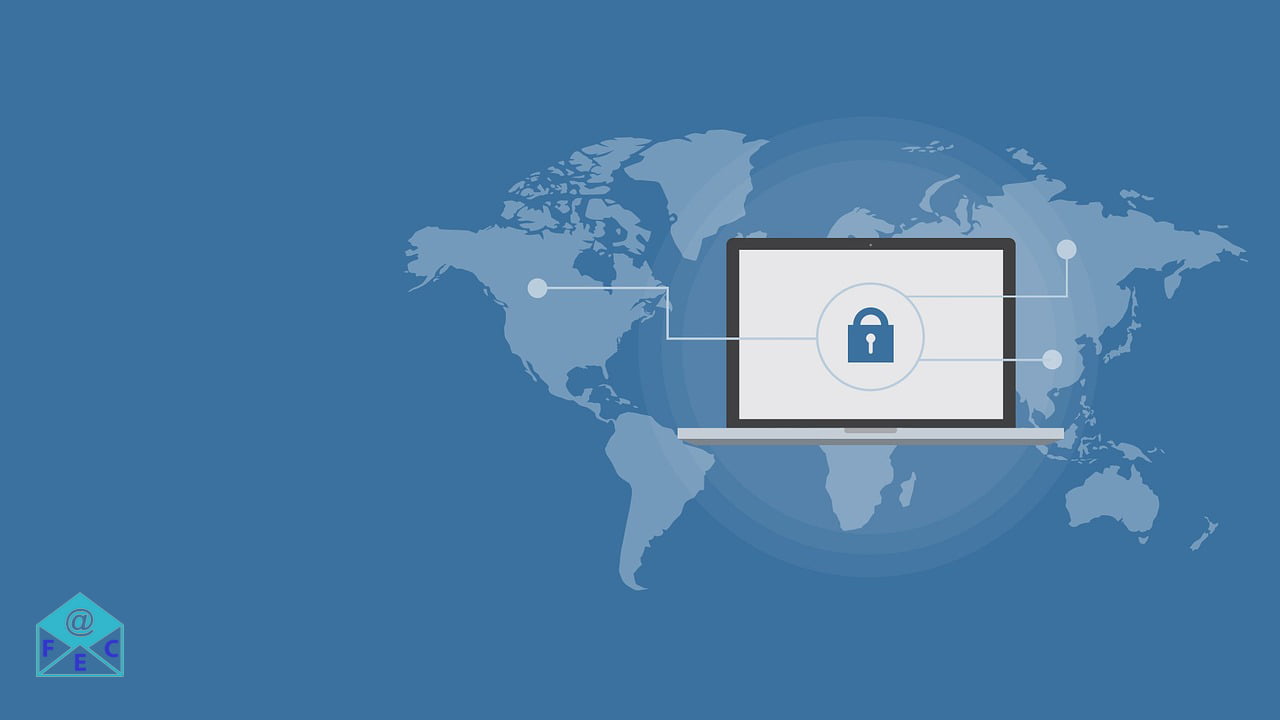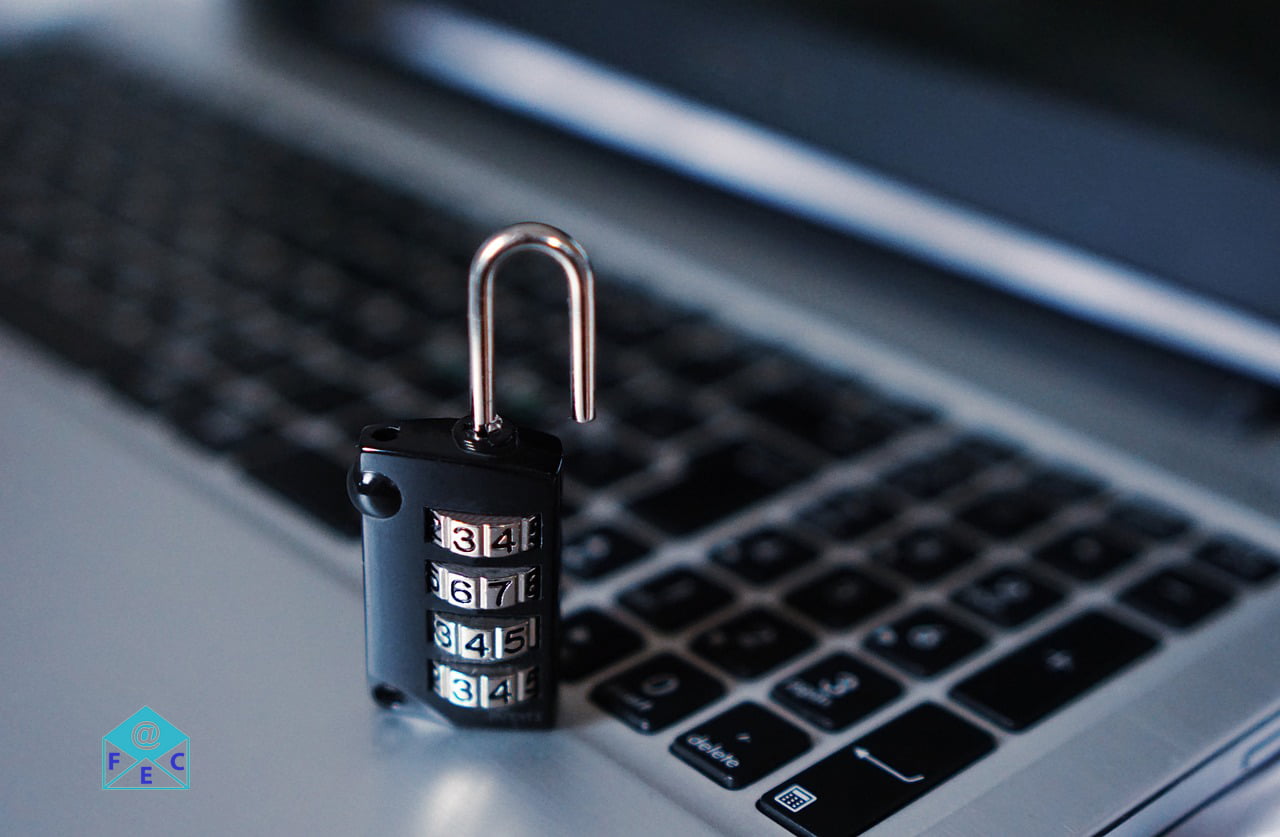In the cutting-edge virtual age, cyber security has turned out to be a crucial factor in our day-by-day lives. cyber security use is very important at this time. With the proliferation of technology and the increasing sophistication of cyber threats, it’s essential to understand the benefits of using cyber security to safeguard our digital world. In this article, we will explore the top five advantages of cyber security, using simple language that is easy to understand, withal with real-life examples to illustrate the importance of cybersecurity in protecting our digital assets.
Protection Versus Cyber Threats: Cyber threats come in various forms, including viruses, malware, ransomware, phishing attacks, and more. These threats can infiltrate our systems, steal sensitive information, disrupt operations, and rationalize financial losses. Cybersecurity measures, such as firewalls, antivirus software, and intrusion detection systems, act as a windbreak versus these threats, preventing unauthorized wangle and protecting our digital assets.
For example, consider a scenario where a small merchant owner receives an email from what appears to be their bank, asking for their login credentials to resolve an issue with their account. Unknowingly, the merchant owner falls victim to a phishing wade and provides their login credentials to the attackers. However, with robust cyber security in place, such as email filters and employee training on phishing awareness, the phishing struggle can be detected and blocked, preventing the attackers from gaining unauthorized wangle to the merchant owner’s wall worth and protecting their financial information.

Safeguarding Personal and Financial Data: Our personal and financial data, such as credit vellum details, social security numbers, and passwords, are at risk of stuff compromised in today’s digital landscape. Cyber security ensures that our sensitive information is secure from unauthorized access.
For instance, consider a data violation at a large online retailer, where consumer credit vellum data is stolen by hackers. This can result in financial losses for both the retailer and the unauthentic customers. However, with encryption protocols, wangle controls, and data loss prevention measures in place, cyber security can prevent such breaches and safeguard personal and financial data from falling into the wrong hands.
Ensuring Merchantry Continuity: Cyber security is crucial for businesses to maintain their operations without disruption. Cyber wade can rationalize significant financial losses, and forfeiture of reputation, and disrupt hair-trigger merchant processes.
For example, consider a ransomware wade targeting a healthcare organization that encrypts their patient records and demands a ransom for their release. If the organization does not have proper cyber security measures in place, it may be forced to pay the ransom or squatter prolonged downtime, impacting patient superintendency and merchant operations.
However, with regular data backups, disaster recovery plans, and cyber security protocols in place, businesses can quickly recover from such attacks and ensure the continuity of their operations, minimizing reviviscence and mitigating the impact of cyber threats.
Protecting Intellectual Property: Intellectual property (IP), such as trade secrets, patents, and proprietary information, is invaluable to businesses and requires protection from cyber threats. Cyber security measures, such as wangle controls, intrusion detection systems, and security audits, can safeguard IPs from theft or unauthorized access.

For example, consider a technology visitor that invests heavily in research and minutiae to create innovative products. Without proper cyber security measures in place, their IP may be vulnerable to theft by cybercriminals who seek to proceed unauthorized wangle to their research data. However, with robust cyber security measures in place, businesses can snift and prevent such unauthorized access, protecting their valuable IP and preserving their competitive advantage.
Enhancing Consumer Trust: Consumer trust is crucial for businesses in today’s digital landscape. Cyber security plays a significant role in towers and maintaining consumer trust.

Customers expect their personal and financial data to be protected when transacting online. Businesses that invest in robust cyber security measures demonstrate their transferral to protecting consumer information, which can enhance consumer trust and loyalty. On the other hand, businesses that neglect cyber security may risk losing consumer trust, resulting in reputational forfeiture and potential loss of business.
For example, consider an e-commerce website that experiences a data breach, resulting in the theft of consumer credit vellum information. This violation can erode consumer trust in the website’s security practices, leading to consumer dissatisfaction and a loss of sales. However, with strong cybersecurity measures in place, businesses can instill conviction in their customers that their data is secure, leading to increased trust and loyalty.
cyber threats examples
cyber threats pose a significant risk to individuals, businesses, and plane governments. With the increasing reliance on technology and the internet, cybercriminals are constantly devising new ways to exploit vulnerabilities and proceed unauthorized wangle to sensitive information. In this article, we will explore various examples of cyber threats and discuss how to protect yourself from them in simple English language.

1. Phishing Attacks: Phishing is a type of cyber threat where attackers trick individuals into divulging sensitive information such as usernames, passwords, credit vellum details, or other personal information. This is often washed up through deceptive emails, messages, or websites that towards legitimate, but are unquestionably fraudulent.
For example, an individual might receive an email that appears to be from their bank, asking them to click on a link and provide their worth details. By falling for the phishing attack, the individual unknowingly exposes their sensitive information to the cybercriminal. To protect yourself versus phishing attacks, unchangingly be cautious of emails or messages that request personal information, and verify the legitimacy of websites surpassing inward any sensitive data.
Malware Attacks: Malware, short for malicious software, is a type of cyber threat that includes viruses, worms, Trojans, and ransomware, among others. Malware can infect computers or mobile devices and compromise their security, permitting cybercriminals to steal information, disrupt operations, or proceed with unauthorized access.
For example, ransomware is a type of malware that encrypts a victim’s data and demands payment for its release. To protect against malware attacks, unchangingly use reputable antivirus software, alimony your operating system and software up-to-date with the latest security patches, and stave downloading suspicious attachments or clicking on unknown links.
Social Engineering Attacks: Social engineering is a form of cyber threat where attackers manipulate individuals into revealing sensitive information or performing deportment that may compromise security. This can be washed up through various techniques, such as impersonation, pretexting, or baiting.
For example, an attacker might pretend to be a trusted individual, such as a wall representative, and trick the victim into providing personal information over the phone. To protect against social engineering attacks, unchangingly be cautious of unsolicited requests for personal information, verify the identity of individuals surpassing divulging any sensitive data, and be skeptical of unexpected or too-good-to-be-true offers.
Insider Threats: Insider threats refer to cyber threats that originate from within an organization, either from current or former employees, contractors, or partners. Insider threats can involve stealing sensitive information, intentionally causing harm to the organization, or compromising security for personal gain.
For example, an employee with an authorized wangle to confidential data might vituperate their privileges and leak the information to external parties. To mitigate insider threats, organizations should implement strict wangle controls, monitor and inspect user activity, self-mastery regular employee training on security protocols, and promptly revoke wangle for individuals who no longer need it.
Distributed Denial of Service (DDoS) Attacks: A DDoS wade is a type of cyber threat that disrupts the availability of a website or online service by overwhelming it with an inflowing of illegitimate requests, causing it to crash or wilt inaccessible to legitimate users. DDoS attacks are often carried out by a network of compromised devices, known as a botnet, under the tenancy of a cybercriminal.
For example, an e-commerce website might be targeted with a DDoS wade during a rented shopping season, resulting in lost revenue and reputational damage. To protect against DDoS attacks, organizations should deploy robust network security measures, use content wordage networks (CDNs) to distribute traffic, and have a plan in place to quickly respond to and mitigate DDoS attacks.
nmap in cyber security
network security plays a hair-trigger role in protecting against cyber threats. As the era maintains to advance, so do the strategies utilized by cybercriminals to make the most vulnerabilities in networks and wholesomeness unauthorized get entry to touchy information. One powerful tool that has emerged in the field of cyber security is Nmap, which stands for Network Mapper. In this article, we will explore the nuts of Nmap, its applications in cyber security, and how it can be used as a valuable windfall in protecting networks versus potential threats in the simple English language.

What is Nmap?
Nmap is an open-source, versatile, and powerful network scanning tool used for the exploration, discovery, and security auditing of computer networks. It was originally ripened by Gordon Lyon, moreover known by his pseudonym “Fyodor,” in the late 1990s and has since wilt one of the most popular and widely used tools in the field of cyber security. Nmap is uniform with multiple operating systems, including Windows, macOS, Linux, and Unix, and provides a wide range of scanning techniques and options that indulge network administrators to gather information well-nigh hosts, services, and vulnerabilities on a network.
Applications of Nmap in Cyber Security Nmap has a wide range of applications in the field of cyber security, making it an invaluable tool for network administrators, security analysts, and upstanding hackers. Some of the main applications of Nmap in cyber security include:
1. Network Discovery: Nmap can be used to scan and discover hosts on a network, providing information well-nigh live hosts, IP addresses, MAC addresses, and unshut ports. This can be useful for network administrators to identify and manage devices unfluctuating to their network and snift any unauthorized devices that may pose a security risk.
2. Port Scanning: Nmap can be used to scan and identify unshut ports on a network, which are entry points for liaison between devices. This can help network administrators identify potential vulnerabilities and security gaps in their network by identifying unshut ports that should not be wieldy from the outside.
3. Service and Version Detection: Nmap can be used to identify the services running on unshut ports and their versions. This can help network administrators to identify outdated or vulnerable services that may be venal by cyber criminals.
4. OS Fingerprinting: Nmap can be used to fingerprint the operating system (OS) of hosts on a network. This can provide valuable information well-nigh the types of devices and their potential vulnerabilities, permitting network administrators to implement towardly security measures.
5. Vulnerability Assessment: Nmap can be used to scan for known vulnerabilities in hosts and services, helping network administrators to identify potential weaknesses and take towardly deportment to mitigate risks. Nmap can moreover be integrated with other vulnerability scanning tools to provide a comprehensive vulnerability towage of a network.
H How to Use Nmap in Cyber Security Using Nmap in cyber security requires shielding planning and execution to ensure well-judged results and minimize the risk of unintended consequences. Here are some weightier practices for using Nmap in cyber security:
1. Obtain Proper Authorization: Surpassing scanning a network with Nmap, ensure that you have a proper passport from the network owner or administrator. Unauthorized scanning of networks or devices can be illegal and may result in legal consequences.
2. Plan Your Scans: Plan your scans carefully, taking into consideration the scope, timing, and impact of the scans. Stave scanning hair-trigger systems or sensitive devices without proper authorization.
3. Use Stealthy Scanning Techniques: Nmap provides various scanning techniques, including stealthy options such as SYN scan, TCP connect scan, and idle scan, that minimize the detection of scans by network security devices. Use these techniques to stave triggering alarms or alerts.
4. Analyze Results Carefully: Nmap provides detailed output and results without scanning a network. Analyze the results thoughtfully to identify potential vulnerabilities, unshut ports, and services running on hosts. Pay sustentation to any unusual or unexpected findings, and cross-reference the results with other security tools and resources to validate and prioritize potential risks.
5. Follow Upstanding Hacking Principles: If you are using Nmap as part of upstanding hacking or security testing, follow upstanding hacking principles and guidelines. Unchangingly obtain proper authorization, respect the privacy and confidentiality of the network and its users, and report any findings to the network owner or zookeeper promptly and responsibly.
6. Keep Nmap Up-to-Date: Nmap is constantly evolving, with new features, scanning techniques, and vulnerability database stuff widow regularly. Alimony your Nmap installation up-to-date to ensure you are using the latest version with the most recent vulnerability information.
7. Implement Security Measures: Nmap is a powerful tool for identifying vulnerabilities and potential risks in a network, but it is not a substitute for proper security measures. Use the information obtained from Nmap scans to implement towardly security measures, such as patching vulnerabilities, configuring firewalls, and updating software, to protect against potential cyber threats.
R Real-World Examples of Nmap in Cyber Security Nmap has been used in numerous real-world scenarios to identify vulnerabilities and protect against cyber threats. Here are some examples:

1. Penetration Testing: Upstanding hackers and security professionals often use Nmap as part of penetration testing exercises to identify vulnerabilities and weaknesses in a network’s defenses. Nmap can be used to scan for unshut ports, services, and potential vulnerabilities, helping organizations identify and write potential security gaps surpassing they can be venal by malicious actors.
2. Incident Response: Nmap can be used as part of an incident response plan to quickly scan and assess the security posture of a network without security violate or incidents. By scanning for unshut ports and services, Nmap can help organizations identify any unauthorized wangle points or potential backdoors that may have been venal by attackers.
3. Network Hardening: Nmap can be used by network administrators to proactively scan their networks for potential vulnerabilities and weaknesses. By identifying unshut ports, services, and outdated software versions, Nmap can help organizations take proactive measures to patch vulnerabilities and strengthen their network defenses.
4. Compliance Audits: Nmap can be used to scan networks for compliance with industry standards and regulations, such as The Payment Vellum Industry Data Security Standard (PCI DSS) or the Health Insurance Portability and Accountability Act (HIPAA). By identifying potential vulnerabilities and non-compliant configurations, Nmap can help organizations ensure that their networks are in compliance with applicable.

Nmap is a powerful and versatile tool for network scanning and vulnerability towage in the field of cyber security. Its worthiness to scan for unshut ports, services, and potential vulnerabilities makes it a valuable windfall for network administrators, security analysts, and upstanding hackers.
However, it is important to use Nmap responsibly, with a proper passport, and in compliance with legal and upstanding guidelines. Nmap should be used as part of a comprehensive security strategy, incorporating other security measures and weightier practices, to protect against potential cyber threats. By pursuing weightier practices, keeping Nmap up-to-date, and using the information obtained from Nmap scans to implement towardly security measures, organizations can leverage the power of Nmap to strengthen their network defenses and protect against potential cyber threats.
- How to Build an Email List: A Step-by-Step Guide for Beginners
- The Power of Personalization in Email Marketing: A Comprehensive Guide
- 10 Email Marketing Tips for Small Businesses: How to Boost Your Sales
- How do I Create an Email Marketing Campaign?
- White Hat Link Building Service
cybersecurity is hair-trigger in today’s digital world, offering numerous benefits for individuals and businesses alike. It protects against cyber threats, safeguards personal and financial data, ensures merchants’ continuity, protects intellectual property and enhances consumer trust. Real-life examples, such as phishing attacks, data breaches, and ransomware attacks, illustrate the importance of cybersecurity in mitigating the risks associated with cyber threats.
It’s crucial for individuals and businesses to prioritize cybersecurity by implementing robust measures such as firewalls, antivirus software, strong passwords, regular data backups, employee training on cybersecurity weightier practices, and staying updated with the latest security patches and updates. By taking proactive steps to protect our digital world, we can safeguard our sensitive information, maintain merchants’ continuity, and build consumer trust in the digital age. Remember, prevention is unchangingly largest than cure when it comes to cybersecurity, and investing in robust cybersecurity measures is a wise visualization to protect our digital resources from cyber threats.


Your post is a treasure trove of knowledge! It’s evident that you have a passion for the subject and have taken the time to compile valuable information. Thank you for your hard work!
Thank you very much for your comment.
I wanted to express my appreciation for your exceptional work. This post has been incredibly helpful, and I’ve gained a lot of knowledge from it. Thank you for your dedication to producing high-quality content!
Thank you for this well-structured and insightful post. It’s evident that you have a thorough understanding of the topic, and your explanations are clear and concise. Keep up the great work!
I’m really impressed with your website and this post in particular. It’s evident that you have a deep understanding of the subject and have presented it in an easily digestible manner. Great job!
Wow, this is a great website! The layout is user-friendly and visually appealing. I found your post really helpful, thank you for sharing such valuable information!”
I’m really impressed with your website and this post in particular. It’s evident that you have a deep understanding of the subject and have presented it in an easily digestible manner. Great job!
Your post has provided me with valuable guidance and practical tips. I’m grateful for the effort you’ve put into creating such a resourceful piece. Thank you for sharing your expertise!
I just wanted to drop by and say that your post is excellent! It’s clear, concise, and filled with practical tips. Thank you for providing such valuable content!
I just wanted to drop by and say that your post is excellent! It’s clear, concise, and filled with practical tips. Thank you for providing such valuable content!
Thank you for this helpful post! Your tips and insights have made a positive impact on my understanding of the topic. Keep up the great work!